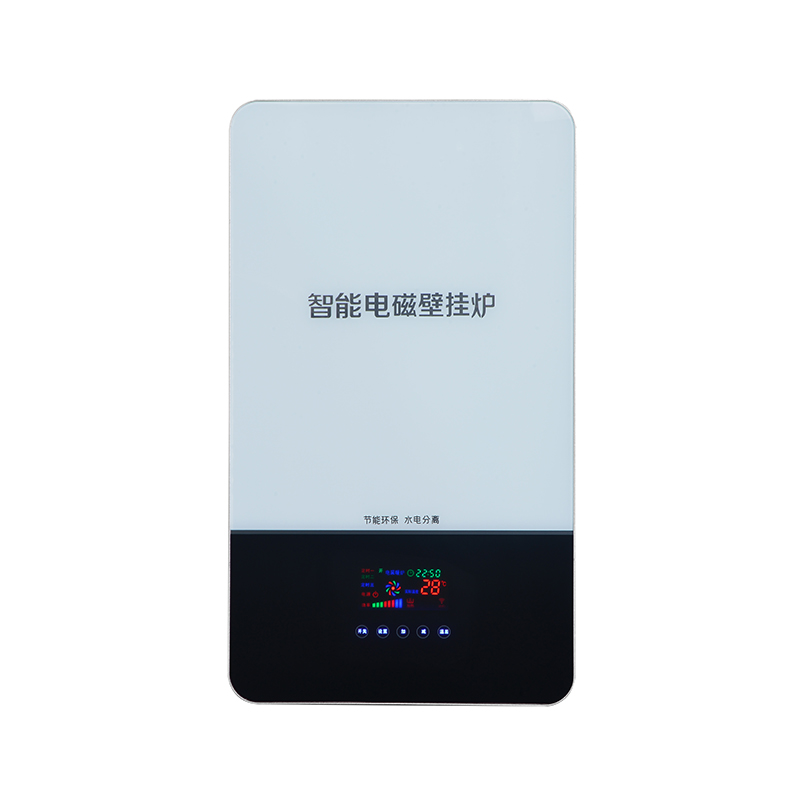How should the heat dissipation system of an electromagnetic heating furnace be designed to cope with high power density requirements?
Release Time : 2025-09-25
To achieve efficient and reliable thermal management, the design of an electromagnetic heating furnace's heat dissipation system requires comprehensive consideration of multiple dimensions, including heat conduction efficiency, heat dissipation structure optimization, heat dissipation material selection, forced cooling methods, thermal resistance control, system stability assurance, and simulation and test verification.
Heat conduction efficiency is the foundation of a heat dissipation system. The core heat source of an electromagnetic heating furnace is the power devices, such as the rectifier bridge and IGBT modules. Heat from these devices must be quickly transferred to the heat dissipation structure via highly thermally conductive materials. For example, using a substrate with high thermal conductivity, such as copper or aluminum, can reduce heat accumulation within the device. Furthermore, filling the space between the device and the heat dissipation substrate with thermal grease or phase change material can further reduce contact thermal resistance and ensure efficient heat transfer.
Optimizing the heat dissipation structure requires a balanced consideration of heat dissipation area and space utilization. Increasing the number of heat dissipation fins or adopting a fin-type design can significantly expand the heat dissipation surface area and improve air convection efficiency. Furthermore, for high-power density scenarios, vapor chambers or heat pipes can be introduced to leverage the phase change principle to achieve rapid and even heat dissipation and avoid localized overheating. For example, in compact electromagnetic heating furnaces, heat pipes quickly transfer heat from concentrated heat sources to heat sink fins, reducing device junction temperatures.
The selection of heat sink materials requires a balance between performance and cost. Aluminum heat sinks are the mainstream choice due to their lightweight, corrosion-resistant, and cost-effectiveness. While copper heat sinks offer superior thermal conductivity, they are heavier and more expensive, making them typically used in applications with extremely demanding heat dissipation requirements. Furthermore, surface treatments (such as anodizing) can enhance the heat sink's radiative heat dissipation capacity, further enhancing overall heat dissipation.
Forced cooling is key to addressing high power densities. Natural convection cooling is inefficient in high-power scenarios, necessitating the use of fans or liquid cooling systems. Fans significantly improve heat dissipation efficiency by accelerating air flow, but a balance must be struck between noise and energy consumption. Liquid cooling systems, on the other hand, absorb heat through a circulating coolant (such as water or thermal oil) and are suitable for applications with limited space or extreme heat dissipation requirements. For example, in industrial-grade electromagnetic heating furnaces, liquid cooling systems enable higher heat flux management, ensuring long-term, stable operation of the equipment.
Thermal resistance control is a core objective in cooling system design. Thermal resistance includes both conductive and convective resistance, which must be comprehensively reduced through optimization of materials, structure, and cooling methods. For example, in heat sink design, adjusting fin spacing and thickness through simulation analysis can reduce airflow resistance and lower convective thermal resistance. Furthermore, the use of embedded heat pipes or vapor chambers can effectively reduce conductive thermal resistance and improve overall cooling performance.
Ensuring system stability requires consideration of the redundancy and reliability of the cooling design. In high-power density scenarios, the cooling system must have sufficient thermal capacity and dynamic response capabilities to cope with power fluctuations or transient overloads. For example, increasing the thickness of the heat sink or adopting a redundant dual-fan design can improve system resilience. Furthermore, selecting heat dissipation materials that are resistant to high temperatures and aging can extend equipment life and reduce maintenance costs.
Simulation and testing verification are essential components of cooling design. Using thermal simulation software (such as FloEFD) to simulate the flow field and temperature rise distribution of a cooling system can help identify design flaws and optimize parameters in advance. In actual testing, cooling performance must be verified in extreme environments such as high temperature and high humidity to ensure the stability of the equipment under real-world operating conditions. For example, during the R&D phase of an electromagnetic heating furnace, monitoring the device surface temperature with an infrared thermal imager allowed precise identification of cooling bottlenecks, providing a basis for design improvements.





